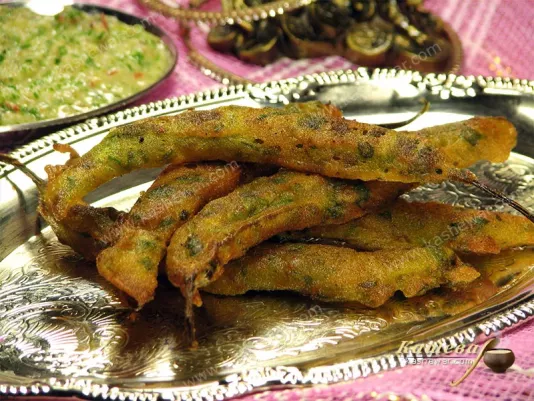Apple Butter
Apple butter is an American recipe that is somewhat reminiscent of jam, but not as sweet due to the addition of apple cider vinegar.

Veganism is a culinary approach that completely excludes animal-based products. In this category, I’ve collected my favorite recipes without meat, milk, eggs, butter, or cheese. Everything is prepared easily, with accessible ingredients: legumes, grains, vegetables, greens, nuts, seeds, oils, and spices. These dishes are great for those who follow a vegan diet, have dietary restrictions, or simply want to add more plant-based food to their routine. Personally, I cook vegan dishes regularly – not out of principle, but for practical reasons. They’re perfect for a light lunch, a quick dinner, or a side dish to a main meal. I’ve found that vegan cooking can be complete, balanced, and very exciting. The key is learning to combine textures, use spices properly, and add accents like sauces, crispy elements, or fermented ingredients. With a bit of inspiration, even simple stewed beans can become a dish worth repeating. I focus on seasonality, simplicity, and real-life experience – and only share recipes I’ve made more than once and know turn out well.
At first glance, a vegan menu may seem limited, but in reality, it opens up many culinary possibilities. When I plan dishes with no animal ingredients whatsoever, I focus on legumes – they provide satiety and protein. Chickpeas, lentils, and beans form the base for soups, pâtés, stews, and vegetable cutlets. Grains – rice, buckwheat, bulgur, quinoa – also offer substance and pair well with vegetables. I add greens, spices, and sauces – like tahini, mustard, vinegar, lemon juice, and olive oil. Nuts and seeds are another important element. I often use sunflower seeds, walnuts, almonds, and sesame – in salads, sauces, as toppings, or snacks. I enjoy preparing vegetables not only by boiling or stewing but also by roasting – it adds more depth of flavor. And of course, spices – they truly make dishes stand out.
When cooking vegan food, I always consider nutrition. For a dish to be complete, I need to combine protein (legumes, soy, tofu, seeds), carbohydrates (grains, vegetables), fats (plant oils, nuts, avocado), and vitamins (fresh greens, vegetables, fermented foods). I usually plan meals for several days: I cook a large batch of chickpeas or lentils, roast vegetables, prepare a sauce and a grain. Then I simply mix the components: rice + roasted pumpkin + tahini; bulgur + spinach + tomatoes + lemon dressing; quinoa + avocado + red beans. The meals are different, but the components are the same – it saves time and effort. I also make sure to include something crunchy (seeds, croutons) and always something fresh. This method makes it easy to put together full meals without complex recipes.
In vegan dishes, it's not just what you cook but how you cook it that matters. Without milk, cheese, or butter, you need to find other sources of rich flavor – and I’ve learned how to do that. It starts with spices: I use plenty of cumin, turmeric, paprika, curry, cinnamon, ginger, black pepper, and smoked blends. Then come the sauces: tahini with lemon juice, hummus, soy sauce with sesame, simple nut dressings, or purees made from roasted vegetables. These elements add richness to any dish. I also play with textures: soft puree + something crunchy + a hint of acidity – and the dish comes alive. For example, roasted carrots with cashew sauce and toasted seeds – simple ingredients, but rich sensations. Or a salad with beans, fresh vegetables, and mustard dressing – quick, easy, and full of flavor.
Some of my most frequently cooked vegan dishes include cream soups, vegetable stews, roasted vegetables with sauces, legume salads, and cutlets made with grains and vegetables. I often make hummus – classic chickpea or green with spinach or herbs. I also love roasted pumpkin with soy sauce and sesame, stewed lentils with carrots and spices, and salads with sauerkraut and beans. For breakfast – millet or rice porridge with fruit, baked apple, whole-grain toast with avocado. I also make sweet desserts without milk or eggs: banana bread, oatmeal and nut cookies, chia pudding with plant milk. All these dishes are simple, accessible, and well-loved – both in my family and among guests.
I always try to cook with what I already have at home – and vegan dishes are perfect for this approach. Beans, rice, onion, carrots, a few spices – and I can prepare several meals for a few days. Seasonality plays a big role: in autumn – pumpkin, beets, root vegetables; in winter – fermented foods, grains, beans; in summer – greens, tomatoes, zucchini. These make it easy to cook something fresh, light, and nutritious. Vegan cooking also inspires new combinations: where I once added cheese to pasta, I now make a sauce with roasted pepper and nuts – and it’s just as tasty. Vegan recipes have become a source of inspiration for me, and I’m sure they’ll be useful to anyone looking for new flavors or simply wanting to make something fresh and plant-based.